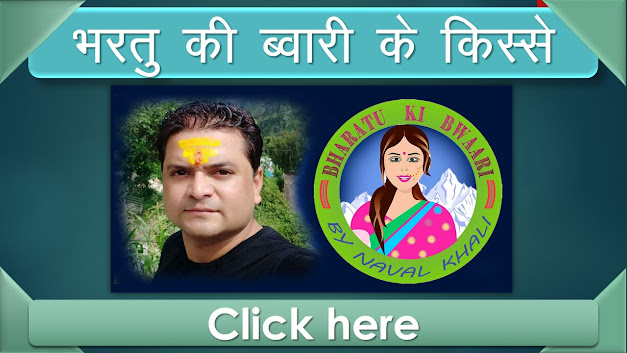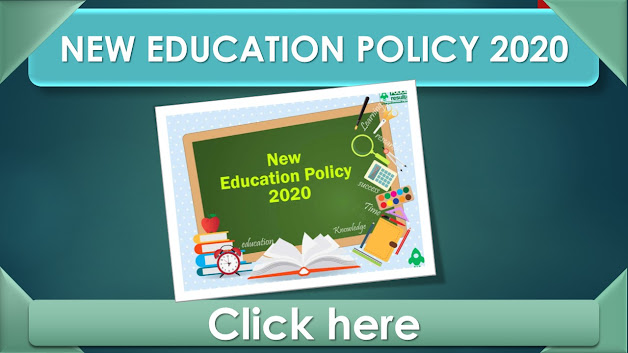National Education Policy 2020
Introduction
Education is fundamental for achieving full human potential, developing an equitable and just society, and promoting national development. Providing universal access to quality education is the key to India’s continued ascent, and leadership on the global stage in terms of economic growth, social justice and equality, scientific advancement, national integration, and cultural preservation. Universal high-quality education is the best way forward for developing and maximizing our country's rich talents and resources for the good of the individual, the society, the country, and the world. India will have the highest population of young people in the world over the next decade, and our ability to provide high-quality educational opportunities to them will determine the future of our country.
The global education development agenda reflected in the Goal 4 (SDG4) of the 2030 Agenda for Sustainable Development, adopted by India in 2015 - seeks to “ensure inclusive and equitable quality education and promote lifelong learning opportunities for all” by 2030. Such a lofty goal will require the entire education system to be reconfigured to support and foster learning, so that all of the critical targets and goals (SDGs) of the 2030 Agenda for Sustainable Development can be achieved.
The world is undergoing rapid changes in the knowledge landscape. With various dramatic scientific and technological advances, such as the rise of big data, machine learning, and artificial intelligence, many unskilled jobs worldwide may be taken over by machines, while the need for a skilled workforce, particularly involving mathematics, computer science, and data science, in conjunction with multidisciplinary abilities across the sciences, social sciences, and humanities, will be increasingly in greater demand. With climate change, increasing pollution, and depleting natural resources, there will be a sizeable shift in how we meet the world’s energy, water, food, and sanitation needs, again resulting in the need for new skilled labour, particularly in biology, chemistry, physics, agriculture, climate science, and social science. The growing emergence of epidemics and pandemics will also call for collaborative research in infectious disease management and development of vaccines and the resultant social issues heightens the need for multidisciplinary learning. There will be a growing demand for humanities and art, as India moves towards becoming a developed country as well as among the three largest economies in the world.
Indeed, with the quickly changing employment landscape and global ecosystem, it is becoming increasingly critical that children not only learn, but more importantly learn how to learn. Education thus, must move towards less content, and more towards learning about how to think critically and solve problems, how to be creative and multidisciplinary, and how to innovate, adapt, and absorb new material in novel and changing fields. Pedagogy must evolve to make education more experiential, holistic, integrated, inquiry-driven, discovery-oriented, learner-centred, discussion-based, flexible, and, of course, enjoyable. The curriculum must include basic arts, crafts, humanities, games, sports and fitness, languages, literature, culture, and values, in addition to science and mathematics, to develop all aspects and capabilities of learners; and make education more well-rounded, useful, and fulfilling to the learner. Education must build character, enable learners to be ethical, rational, compassionate, and caring, while at the same time prepare them for gainful, fulfilling employment.
The gap between the current state of learning outcomes and what is required must be bridged through undertaking major reforms that bring the highest quality, equity, and integrity into the system, from early childhood care and education through higher education.
The aim must be for India to have an education system by 2040 that is second to none, with equitable access to the highest-quality education for all learners regardless of social or economic background.
This National Education Policy 2020 is the first education policy of the 21st century and aims to address the many growing developmental imperatives of our country. This Policy proposes the revision and revamping of all aspects of the education structure, including its regulation and governance, to create a new system that is aligned with the aspirational goals of 21st century education, including SDG4, while building upon India’s traditions and value systems.
The National Education Policy lays particular emphasis on the development of the creative potential of each individual. It is based on the principle that education must develop not only cognitive capacities - both the ‘foundational capacities ’of literacy and numeracy and ‘higher-order’ cognitive capacities, such as critical thinking and problem solving – but also social, ethical, and emotional capacities and dispositions.
The rich heritage of ancient and eternal Indian knowledge and thought has been a guiding light for this Policy. The pursuit of knowledge (Jnan), wisdom (Pragyaa), and truth (Satya) was always considered in Indian thought and philosophy as the highest human goal. The aim of education in ancient India was not just the acquisition of knowledge as preparation for life in this world, or life beyond schooling, but for the complete realization and liberation of the self. World-class institutions of ancient India such as Takshashila, Nalanda,Vikramshila, Vallabhi, set the highest standards of multidisciplinary teaching and research and hosted scholars and students from across backgrounds and countries. The Indian education system produced great scholars such as Charaka, Susruta, Aryabhata, Varahamihira, Bhaskaracharya, Brahmagupta, Chanakya, Chakrapani Datta, Madhava, Panini, Patanjali, Nagarjuna, Gautama, Pingala, Sankardev, Maitreyi, Gargi and Thiruvalluvar, among numerous others, who made seminal contributions to world knowledge in diverse fields such as mathematics, astronomy, metallurgy, medical science and surgery, civil engineering, architecture, shipbuilding and navigation, yoga, fine arts, chess, and more. Indian culture and philosophy have had a strong influence on the world. These rich legacies to world heritage must not only be nurtured and preserved for posterity but also researched, enhanced, and put to new uses through our education system.
The teacher must be at the centre of the fundamental reforms in the education system. The new education policy must help re-establish teachers, at all levels, as the most respected and essential members of our society, because they truly shape our next generation of citizens. It must do everything to empower teachers and help them to do their job as effectively as possible. The new education policy must help recruit the very best and brightest to enter the teaching profession at all levels, by ensuring livelihood, respect, dignity, and autonomy, while also instilling in the system basic methods of quality control and accountability.
The new education policy must provide to all students, irrespective of their place of residence, a quality education system, with particular focus on historically marginalized, disadvantaged, and underrepresented groups. Education is a great leveler and is the best tool for achieving economic and social mobility, inclusion, and equality. Initiatives must be in place to ensure that all students from such groups, despite inherent obstacles, are provided various targeted opportunities to enter and excel in the educational system.
These elements must be incorporated taking into account the local and global needs of the country, and with a respect for and deference to its rich diversity and culture. Instilling knowledge of India and its varied social, cultural, and technological needs, its inimitable artistic, language, and knowledge traditions, and its strong ethics in India’s young people is considered critical for purposes of national pride, self-confidence, self-knowledge, cooperation, and integration.
Previous Policies
The implementation of previous policies on education has focused largely on issues of access and equity. The unfinished agenda of the National Policy on Education 1986, modified in 1992 (NPE 1986/92), is appropriately dealt with in this Policy. A major development since the last Policy of 1986/92 has been the Right of Children to Free and Compulsory Education Act 2009 which laid down legal underpinnings for achieving universal elementary education.
Principles of this Policy
The purpose of the education system is to develop good human beings capable of rational thought and action, possessing compassion and empathy, courage and resilience, scientific temper and
creative imagination, with sound ethical moorings and values. It aims at producing engaged, productive, and contributing citizens for building an equitable, inclusive, and plural society as envisaged by our Constitution.
A good education institution is one in which every student feels welcomed and cared for, where a safe and stimulating learning environment exists, where a wide range of learning experiences are offered, and where good physical infrastructure and appropriate resources conducive to learning are available to all students. Attaining these qualities must be the goal of every educational institution. However, at the same time, there must also be seamless integration and coordination across institutions and across all stages of education.
The fundamental principles that will guide both the education system at large, as well as the individual institutions within it are:
- recognizing, identifying, and fostering the unique capabilities of each student, by sensitizing teachers as well as parents to promote each student’s holistic development in both academic and non-academic spheres;
- according the highest priority to achieving Foundational Literacy and Numeracy by all students by Grade 3;
- flexibility, so that learners have the ability to choose their learning trajectories and programmes, and thereby choose their own paths in life according to their talents and interests;
- no hard separations between arts and sciences, between curricular and extra-curricular activities, between vocational and academic streams, etc. in order to eliminate harmful hierarchies among, and silos between different areas of learning;
- multidisciplinarity and a holistic education across the sciences, social sciences, arts, humanities, and sports for a multidisciplinary world in order to ensure the unity and integrity of all knowledge;
- emphasis on conceptual understanding rather than rote learning and learning-for-exams;
- creativity and critical thinking to encourage logical decision-making and innovation;
- ethics and human & Constitutional values like empathy, respect for others, cleanliness, courtesy, democratic spirit, spirit of service, respect for public property, scientific temper, liberty, responsibility, pluralism, equality, and justice;
- promoting multilingualism and the power of language in teaching and learning;
- life skills such as communication, cooperation, teamwork, and resilience;
- focus on regular formative assessment for learning rather than the summative assessment that encourages today’s ‘coaching culture ’;
- extensive use of technology in teaching and learning, removing language barriers, increasing access for Divyang students, and educational planning and management;
- respect for diversity and respect for the local context in all curriculum, pedagogy, and policy, always keeping in mind that education is a concurrent subject;
- full equity and inclusion as the cornerstone of all educational decisions to ensure that all students are able to thrive in the education system;
- synergy in curriculum across all levels of education from early childhood care and education to school education to higher education;
- teachers and faculty as the heart of the learning process – their recruitment, continuous professional development, positive working environments and service conditions;
- a ‘light but tight’ regulatory framework to ensure integrity, transparency, and resource efficiency of the educational system through audit and public disclosure while encouraging innovation and out-of-the-box ideas through autonomy, good governance, and empowerment;
- outstanding research as a corequisite for outstanding education and development;
- continuous review of progress based on sustained research and regular assessment by educational experts;
- a rootedness and pride in India, and its rich, diverse, ancient and modern culture and knowledge systems and traditions;
- education is a public service; access to quality education must be considered a basic right of every child;
- substantial investment in a strong, vibrant public education system as well as the encouragement and facilitation of true philanthropic private and community participation.
The Vision of this Policy
This National Education Policy envisions an education system rooted in Indian ethos that contributes directly to transforming India, that is Bharat, sustainably into an equitable and vibrant knowledge society, by providing high-quality education to all, and thereby making India a global knowledge superpower. The Policy envisages that the curriculum and pedagogy of our institutions must develop among the students a deep sense of respect towards the Fundamental Duties and Constitutional values, bonding with one’s country, and a conscious awareness of one’s roles and responsibilities in a changing world. The vision of the Policy is to instill among the learners a deep-rooted pride in being Indian, not only in thought, but also in spirit, intellect, and deeds, as well as to develop knowledge, skills, values, and dispositions that support responsible commitment to human rights, sustainable development and living, and global well-being, thereby reflecting a truly global citizen.
English Link
- NatNational Education Policy 2020ional
- NEP 2020 ,Part I. SCHOOL EDUCATION
- NEP 2020 ,Part I. Curriculum and Pedagogy in Schools: Learning Should be Holistic, Integrated, Enjoyable, and Engaging
- NEP 2020 ,Part I. Teachers
- NEP 2020 ,Part I, Equitable and Inclusive Education: Learning for All
- NEP 2020 ,Part I, Efficient Resourcing and Effective Governance through School Complexes/Clusters
- NEP 2020 ,Part I, Standard-setting and Accreditation for School Education
- NEP 2020 , Part II, HIGHER EDUCATION
- NEP 2020 , Part II, HIGHER EDUCATION, Institutional Restructuring and Consolidation
- NEP 2020 , Part II, HIGHER EDUCATION, Towards a More Holistic and Multidisciplinary Education
- NEP 2020 , Part II, HIGHER EDUCATION, Optimal Learning Environments and Support for Students
- NEP 2020 , Part II, HIGHER EDUCATION, Motivated, Energized, and Capable Faculty
- NEP 2020 , Part II, HIGHER EDUCATION, Equity and Inclusion in Higher Education
- NEP 2020 , Part II, HIGHER EDUCATION, Teacher Education
- NEP 2020 , Part II, HIGHER EDUCATION, Reimagining Vocational Education
- NEP 2020 , Part II, HIGHER EDUCATION, Catalysing Quality Academic Research in All Fields through a new National Research Foundation
- NEP 2020 , Part II, HIGHER EDUCATION, Transforming the Regulatory System of Higher Education
- NEP 2020 , Part II, HIGHER EDUCATION, Effective Governance and Leadership for Higher Education Institutions
- NEP 2020, Part III, OTHER KEY AREAS OF FOCUS
- NEP 2020, Part III, Adult Education and Lifelong Learning
- NEP 2020, Part III, Promotion of Indian Languages, Arts, and Culture
- NEP 2020, Part III, Technology Use and Integration
- NEP 2020, Part III, Online and Digital Education: Ensuring Equitable Use of Technology
- NEP 2020, Part IV, MAKING IT HAPPEN
हिंदी लिंक
- NatNational Education Policy 2020ional (राष्ट्रीय शिक्षा नीति 2020)
- एनईपी 2020, भाग I। स्कूल शिक्षा
- एनईपी 2020, भाग I। स्कूलों में पाठ्यचर्या और शिक्षाशास्त्र: सीखना समग्र, एकीकृत, आनंददायक और आकर्षक होना चाहिए
- एनईपी 2020, भाग I। शिक्षक
- एनईपी 2020, भाग I, समान और समावेशी शिक्षा: सभी के लिए सीखना
- एनईपी 2020, भाग I, स्कूल परिसरों / समूहों के माध्यम से कुशल संसाधन और प्रभावी शासन
- एनईपी 2020, भाग I, स्कूली शिक्षा के लिए मानक-सेटिंग और प्रत्यायन
- एनईपी 2020, भाग II, उच्च शिक्षा
- एनईपी 2020, भाग II, उच्च शिक्षा, संस्थागत पुनर्गठन और समेकन
- NEP 2020, भाग II, उच्च शिक्षा, एक अधिक समग्र और बहुविषयक शिक्षा की ओर
- एनईपी 2020, भाग II, उच्च शिक्षा, इष्टतम शिक्षण वातावरण और छात्रों के लिए समर्थन
- एनईपी 2020, भाग II, उच्च शिक्षा, प्रेरित, ऊर्जावान और सक्षम संकाय
- NEP 2020, भाग II, उच्च शिक्षा, समानता और उच्च शिक्षा में समावेश
- एनईपी 2020, भाग II, उच्च शिक्षा, शिक्षक शिक्षा
- एनईपी 2020, भाग II, उच्च शिक्षा, व्यावसायिक शिक्षा की पुनर्कल्पना
- एनईपी 2020, भाग II, उच्च शिक्षा, एक नए राष्ट्रीय अनुसंधान फाउंडेशन के माध्यम से सभी क्षेत्रों में गुणवत्तापूर्ण शैक्षणिक अनुसंधान को उत्प्रेरित करना
- NEP 2020, भाग II, उच्च शिक्षा, उच्च शिक्षा की नियामक प्रणाली को बदलना
- NEP 2020, भाग II, उच्च शिक्षा, उच्च शिक्षा संस्थानों के लिए प्रभावी शासन और नेतृत्व
- एनईपी 2020, भाग III, फोकस के अन्य प्रमुख क्षेत्र
- एनईपी 2020, भाग III, प्रौढ़ शिक्षा और आजीवन शिक्षा
- एनईपी 2020, भाग III, भारतीय भाषाओं, कला और संस्कृति को बढ़ावा देना
- एनईपी 2020, भाग III, प्रौद्योगिकी उपयोग और एकीकरण
- एनईपी 2020, भाग III, ऑनलाइन और डिजिटल शिक्षा: प्रौद्योगिकी का समान उपयोग सुनिश्चित करना
- एनईपी 2020, भाग IV, इसे संभव बनाना











Follow Us